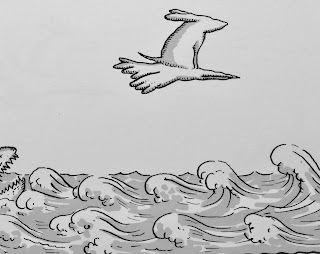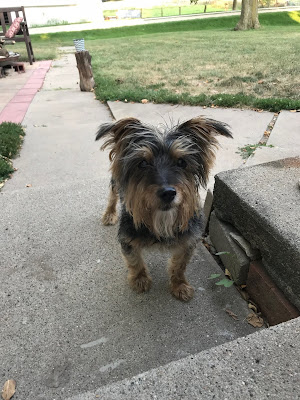Quality of life. Quality of life. Quality of life. This is your new mantra.
Quality of life is what you have to determine when your pet gets old or sick, or both. How do you define quality of life, and how do you measure it? And when it’s an animal—a pet who is considered a family member—how do you determine that its life is no longer worth living?
“Can he walk? Can he eat? Can he breathe? Can he glean any enjoyment whatsoever out of his days?” the online questionnaires ask when searching for the answer to the dreaded question: How do you know when it’s time to euthanize your pet?
You begin contemplating the end. You wonder how many more days you can eke out. How many more meals you can try to hand feed your furry friend. How many more sleepless nights you will have from taking him out to pee. How many mornings you will hold your own breath until you make sure your pet is still breathing.
One questionnaire asks, “Are you weary?” Yes, you are weary. You are so very, very weary you want to be euthanized yourself.
“Who made you God?” you admonish yourself for even considering the lethal injection.
Of course, we would always prefer that end-of-life decisions were left up to nature. We want our pets to die peacefully, painlessly in their sleep. But nature doesn’t operate on our schedule. Nature pays no mind to our heartache—and healthcare costs—and the wish for a natural death as we watch in agony over their steady decline. To be fair, nature often does offer to take our loved ones before they grow too old to stand on their own legs or too confused to find their water dish. Out in the wild, the weak and injured become prey for the food chain. But we intervene with trips to the vet, with IVs and antibiotics, stitches and insulin, teeth cleaning and painkillers. We do whatever it takes to prolong the inevitable.
We love our pets so much. We want them to be with us forever. We cannot imagine life without them. We don’t want to let go. We refuse to let go.
You go back online and take another quiz. “Rate from 1 to 10 your pet’s hurt, hunger, hydration, hygiene, happiness, and mobility.” Your score is off the chart. He aches too much to walk. He won’t eat—even though you’ve offered him baked salmon, grilled steak, roasted chicken. He drinks water like he can’t get enough. His coat is dull and gray. His teeth, once so strong and white, have turned dark brown. He’s blind. He’s got diabetes, congestive heart failure, arthritis.
You could call a friend, who just put down his 18-and-a-half-year-old dachshund, to ask what you should do. But you know that asking for opinions will just create more drama. It’s your decision. You want to keep it private. So you spend the day doing simple tasks that allow your mind to work it out. You sew—and break the needle. You bake—and burn the bread.
Finally, you take your dog—your 15-and-a-half-year-old Jack Russell-Yorkshire terrier mix—for a ride on the side-by-side. You speed down the gravel roads as fast as the little off-road vehicle will go. Your dog puts his face into the wind, his hair blows back, his nose twitches with curiosity, he perks up like he’s his old self—the one you haven’t seen for months. Feeling the wind in his face is one of his favorite things, the only thing from which he can still derive pleasure. You’ve given him his last taste of what little quality of life he has left.
The websites say pet owners often wait too long. Their animals suffer needlessly. But on this windy ride he’s so alert. Maybe he could live longer. Maybe today is not the day for the vet to come to the house. But you’ve already made the appointment. It was so painful to come to this decision that to reverse it now will only cause more confusion, more crying. You’ve cried enough. You’ve been crying for the past two years over his multiplying illnesses and his numerous brushes with death. You have your own quality of life to consider, and that quality has been diminishing along with your dog’s health.
Like humans, animals have their good days and bad days. For a dog that has had an exceptionally good life, you acknowledge that it’s fitting for him to depart on one of his good days. Even though your heart is shattering into a million pieces and your chest feels like it’s going to implode. You repeat the mantra over and over: Quality of life. Quality of life. Quality of life. You remind yourself that quality of life also applies to quality of death. The word “euthanasia,” as you’ve learned through your exhaustive internet searches, is Greek for “good death.”
You don’t believe it yet, but in the future you will realize that this “good death” is the greatest love you can show your pet. And love is the greatest, most enduring quality of all.
For Jack Howard-Iken
May 17, 2004 — September 10, 2019

“The Jack Russell Terrier is as stubborn as they come, which may be why this breed lives so long. Given proper care, the life expectancy of this fearless, energetic, vocal dog breed averages about 15 years, possibly even longer.”
Dear Jack,
We never thought you’d live to see old age, but like with everything you did, you exceeded our expectations. Here’s to feeling the wind in your face on the other side.
Love,Beth, Doug, and Mali
*You might also like to read Jack’s post from 2017 on life at Camp Doug*
